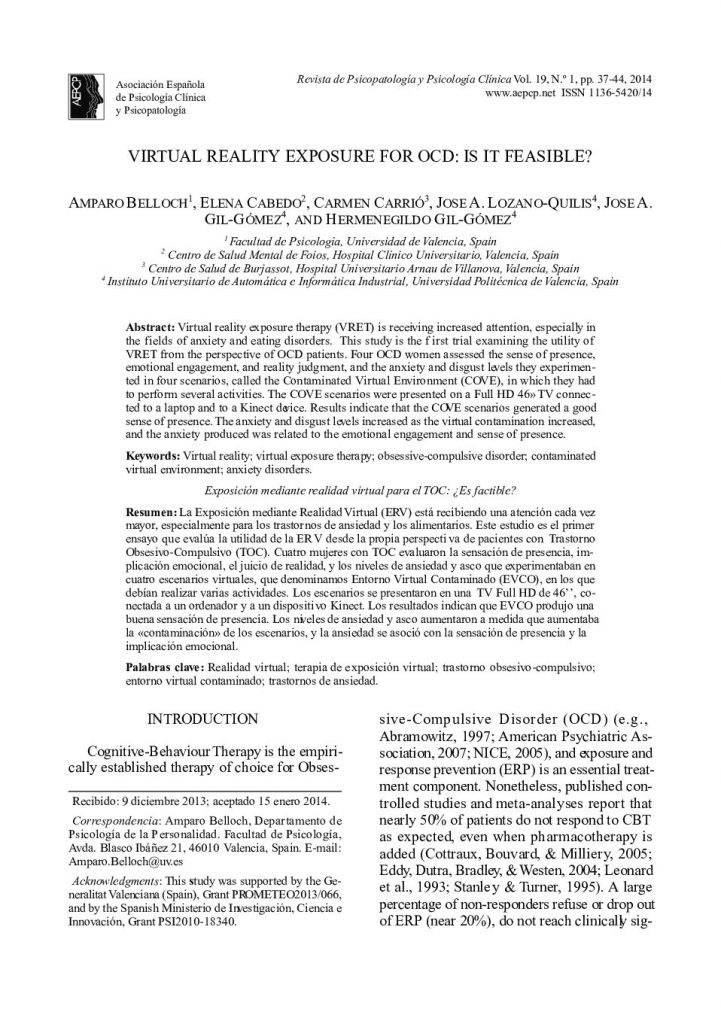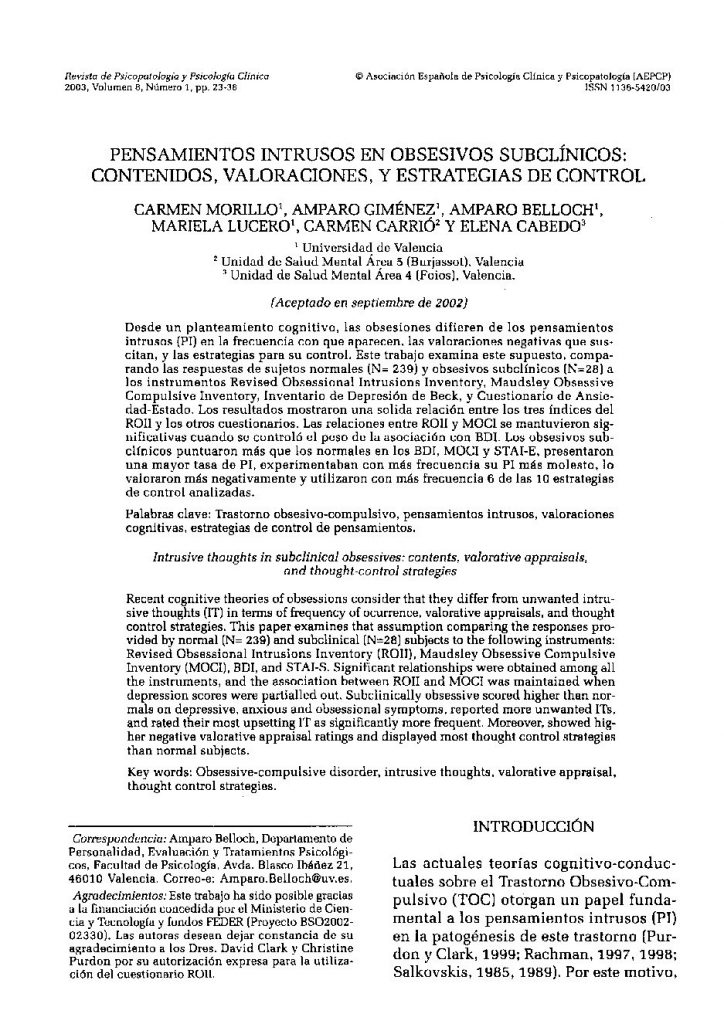Virtual reality exposure for OCD: Is it feasible?

- Modelo de personalidad HEXACO: Relaciones con psicopatología emocional en una muestra española.
- Las escalas PANAS de afecto positivo y negativo: Nuevos datos de su uso en personas mayores.
- Análisis diferencial retrospectivo de las variables de salud mental en lesbianas, gais y bisexuales (LGB) víctimas de bullying homofóbico en la escuela.
- Virtual reality exposure for OCD: Is it feasible?
- Dimensiones psicopatológicas de las escalas clínicas del MMPI-2.
- Prevención de la depresión en niños y adolescentes: Revisión y reflexión.
Virtual reality exposure therapy (VRET) is receiving increased attention, especially in the fields of anxiety and eating disorders. This study is the first trial examining the utility of VRET from the perspective of OCD patients. Four OCD women assessed the sense of presence, emotional engagement, and reality judgment, and the anxiety and disgust levels they experimented in four scenarios, called the Contaminated Virtual Environment (COVE), in which they had to perform several activities. The COVE scenarios were presented on a Full HD 46” TV connected to a laptop and to a Kinect device. Results indicate that the COVE scenarios generated a good sense of presence. The anxiety and disgust levels increased as the virtual contamination increased, and the anxiety produced was related to the emotional engagement and sense of presence.
La Exposición mediante Realidad Virtual (ERV) está recibiendo una atención cada vez mayor, especialmente para los trastornos de ansiedad y los alimentarios. Este estudio es el primer ensayo que evalúa la utilidad de la ERV desde la propia perspectiva de pacientes con Trastorno Obsesivo-Compulsivo (TOC). Cuatro mujeres con TOC evaluaron la sensación de presencia, implicación emocional, el juicio de realidad, y los niveles de ansiedad y asco que experimentaban en cuatro escenarios virtuales, que denominamos Entorno Virtual Contaminado (EVCO), en los que debían realizar varias actividades. Los escenarios se presentaron en una TV Full HD de 46’’, conectada a un ordenador y a un dispositivo Kinect. Los resultados indican que EVCO produjo una buena sensación de presencia. Los niveles de ansiedad y asco aumentaron a medida que aumentaba la “contaminación” de los escenarios, y la ansiedad se asoció con la sensación de presencia y la implicación emocional.




